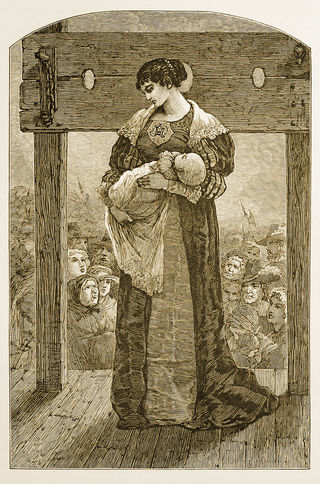Embarrassment
Shoe Shaming in the Strictest School in Britain
Can shame enforce good behavior? Merchants’ Academy is gambling on it working.
Posted August 1, 2017
Black, plain, and polishable shoes (not shiny, and no buckles or decorations), no decorative attachments in the hair (“slides and clips should be minimal and not fashion items”), no untucked shirts on students, no top buttons undone, no sleeves rolled up on blazers, and, in class, no table tapping or clock watching. Keep left in the corridors between classes. Students are also forbidden the use of mobile phones or MP3 devices on the school campus. These actions are all banned by the positive behaviour policy introduced on July 10, 2017 at the Merchants’ Academy in Bristol. No phones in class? It sounds like an educational Shangri-La. That’s not what the newspapers thought. For the press in July 2017 it was “the strictest school in Britain.”

The Merchants’ Academy? It’s a school in Withywood, a section of Bristol in south-east England. The academy is coeducational and was established in 2008. It’s funded by the Bristol City Council and sponsored by the wealthy and civic-minded Society of Merchant Venturers, a local charitable organization, and by the University of Bristol. The University of Bristol expresses considerable enthusiasm for its link to the school: “Making use of its world-renowned research expertise, the Graduate School of Education [at the University of Bristol] has had considerable input to the Academy's teaching and learning strategy.”
What made the Merchants’ Academy a magnet for newspaper reporting in mid July of 2017 was not so much its uniform policy, nor even its vigorous detention policy, but its use of shame signs or “humiliating tags,” as the Daily Express strangely put it. Infraction of the dress code at this English school (it’s easy to forget that pupils still wear uniforms in the UK) is liable to land you with a sign attached to a lanyard and hung round your neck. It could read, according to a National Post July 18 report, “I have 24 hours to sort out my uniform.”
The “shame lanyard” makes a bland enough comment on the state of a student’s uniform and one which might save the student from harassment from other zealous teachers (who, to be fair, are also kept to task by the positive behavior policy document). According to the UK Daily Mail Lauren, 14, was wearing non-regulation footwear. The offending shoes were to help Lauren with a foot injury caused by a fall. She was presented with the “I-have-24-hours-to-sort-out-my-uniform” shame lanyard. The sign was subsequently changed because of her injury. She was given a new tag indicating her shoes were the result of a fall. The reaction to such positive behavioural badges has been vigorous. One person, I suppose a parent, commented: “Isn't this what the Nazi party did. Making people wear signs?? You would have thought that the school would have had a history teacher to point this out to them.”
What is it with the Merchants’ Academy and its shoe shaming? And what is it with disgruntled parents that they compare shoe shaming to the racial policies in Germany of the 1930’s and 1940’s? Maybe it’s because “shame” is everywhere at the minute – add your own noun to “shaming” and you’ll probably find that someone is complaining about this very thing somewhere on line at this very minute. Shoe shaming?
Merchants’ Academy shouldn’t really have much to worry about, because lots of parents are all for its tough dress code. Helen Sharpe, presumably another parent, is quoted in the Daily Mail saying: “Too many wishy washy parents nowadays have resulted in a generation of self entitled teens who think the rules don't apply to them and they are able to do what they like without consequence." But you can’t mess with signs and shame, can you, even if they are only about footwear or hair slides. People get very testy about shaming.

Maybe this is because shame and guilt are so easily confused. Traditionally they weren’t meant to be. When Hester Prynne was found guilty of adultery in June 1642 in Puritan Boston she was condemned to wear a scarlet "A" on her clothing (the "A" stood for adultery). Hester Prynne was also forced to expose herself to public shame by standing on the scaffold for three hours. Her shaming was felt to be commensurate with her guilt. So it was that her shaming was not designed simply to encourage the rest of her Puritan community to avoid adultery. Shame was intended to lead Hester to an understanding of her personal guilt. This should lead to a reform in her moral behavior. That it didn’t was because guilt is a usually a meaningless commodity. All that and more is in Nathaniel Hawthorne’s 1850 novel The Scarlet Letter.
Guilt, if it ever really existed, has gone the way of the Tasmanian tiger. But shame, by contrast a real emotion, persists and it’s a handy way for people who control the signage to control people. But shame only works if there is a clear relationship between the shame and guilt. You can make up your own mind about Merchants’ Academy. (I think that the newspapers overdid it.) But Nathaniel Hawthorne thought that what happened to Hester Prynne was pretty awful. The problem, I think Hawthorne would say if he were here to pipe up, is that shaming is easy, but knowing what constitutes guilt is hard. Hester Prynne was as free of guilt as these summer days are long.


